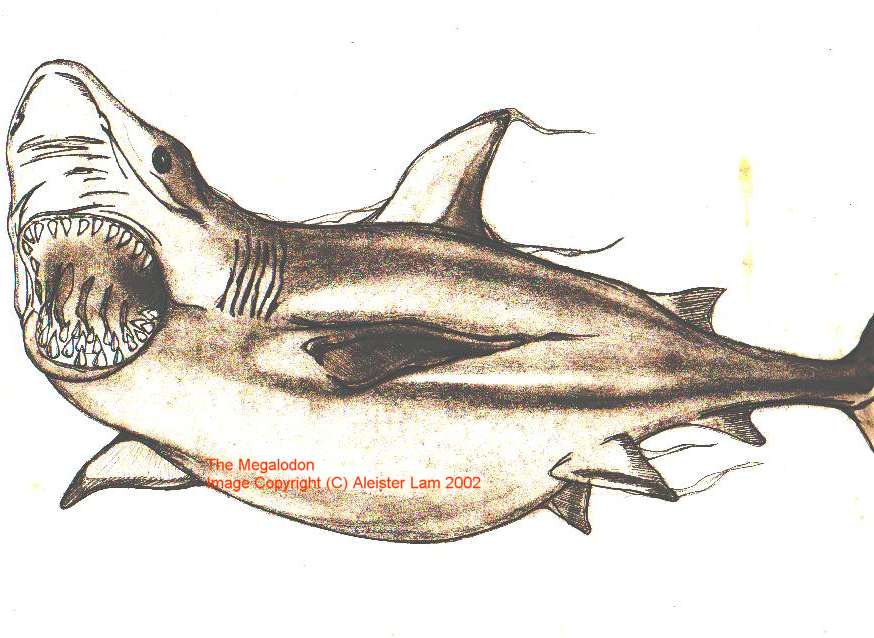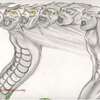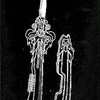
Prehistoric Monsters - Megalodon by @aleilam (Aleister Lam)
The ancestor of that dreaded modern killer of the sea, the Great White Shark; this prehistoric predator is estimated to grow up to a size of about 60 feet in length. The average size of the Great White Shark is around 15 feet though there records of fisherman hauling up one that is up to 20 feet long; but its still dwarfed compared to that of the Megalodon. The average size of a full-grown human is probably only the size of the fins of the Megalodon depicted in the picture.
Fisherman of the cold Arctic regions have reported sighting of a Shark that is over 50 feet long and cryptozoologists have speculated that the creature could have survived extinction and had hid itself from human detection by inhabiting those cold and remote icy water in the abyssmal depth of the Arctic sea, probably surviving on giant squids and deep sea fishes and probably feasting on the sperm whales that inhabit these region.
This is another of my picture that is done a long time ago, probably in the late eighties. I decided to put up this picture in my gallery coz I would like to devote a few pics in my gallery focusing on Prehistoric monsters that once had roamed the face of this earth like the Velociraptors and Spinosaurus that I'm very much fascinated with. Artwork © Copyright 2002 Aleister Lam
Comments & Critiques (0)
Preferred comment/critique type for this content: Any Kind



Leave a Comment
You must be logged in and have an Active account to leave a comment.
Please, login or sign up for an account.